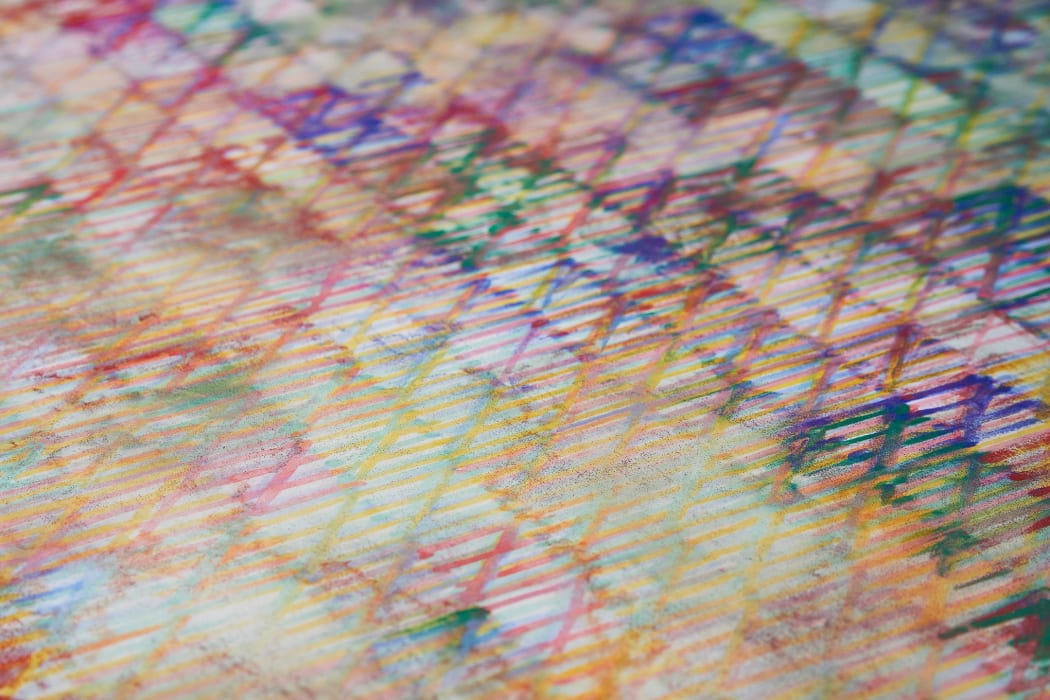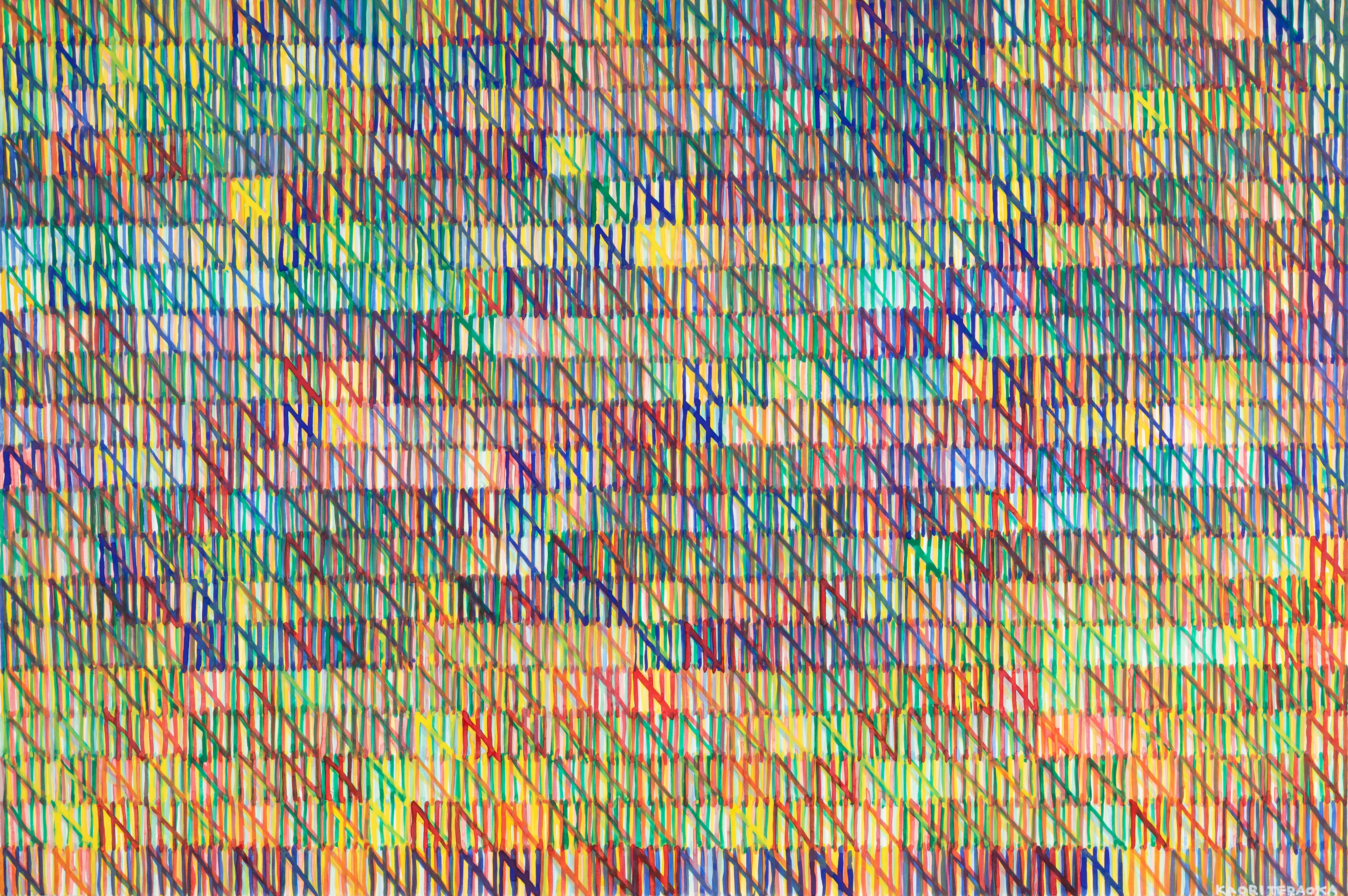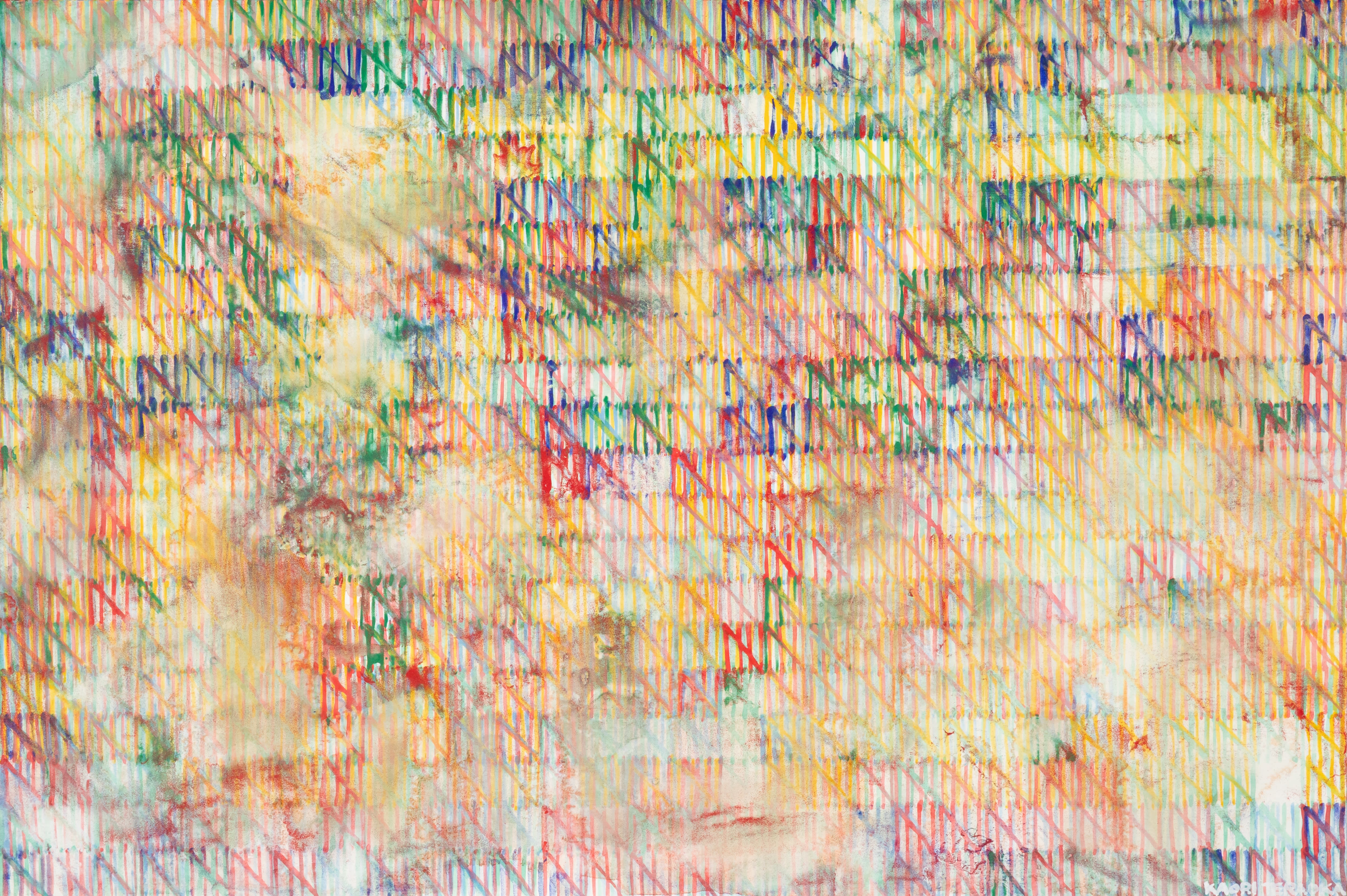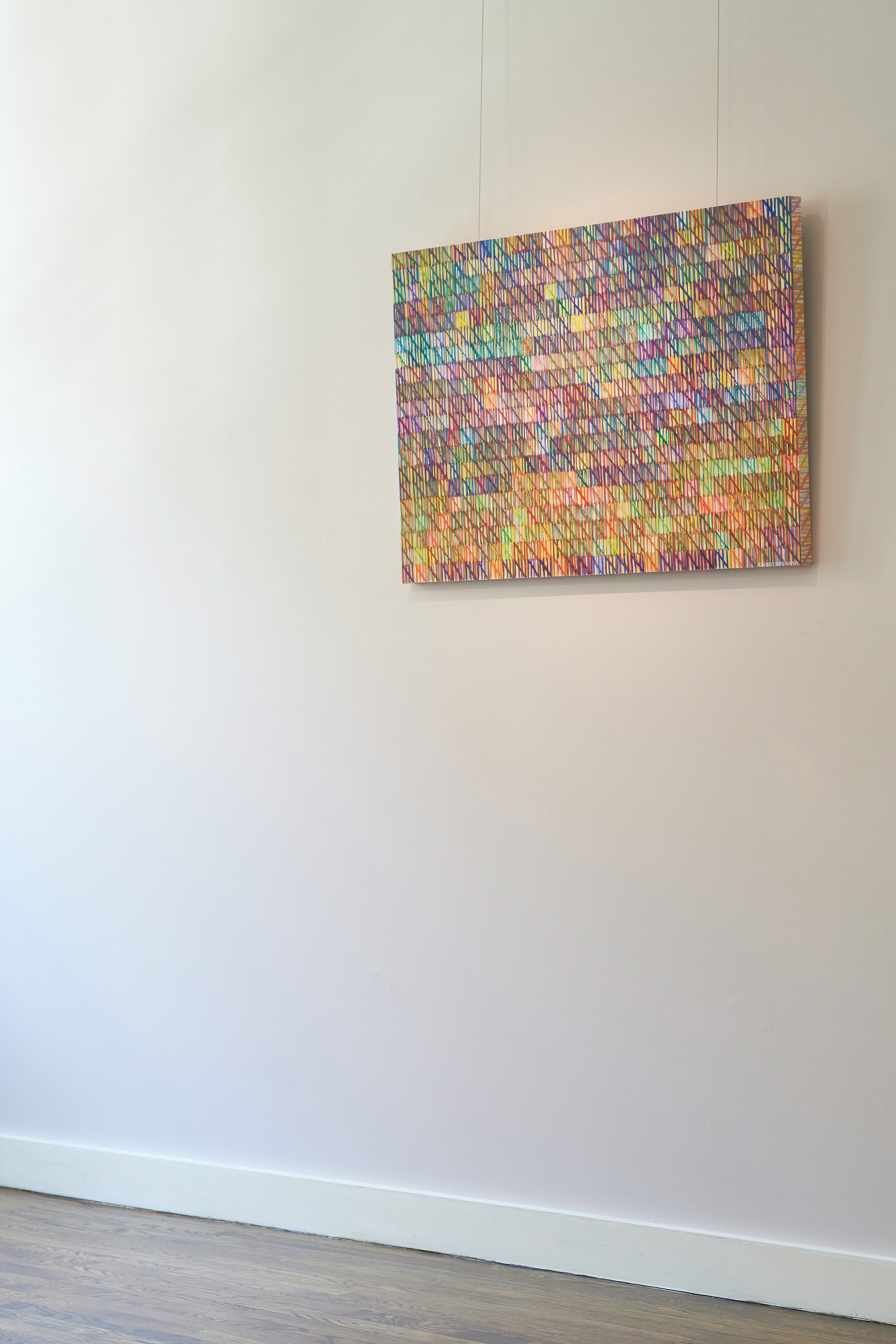
Detail, Kaori Teraoka,「rhythm 4/3 - 4/6」 (A25828)
Kaori Teraoka is a nihonga painter living and working in Tokyo, Japan. Her paintings on hemp washi paper (mashi) are colorful records of time and emotion. Her work, which is on view as part of Panta Rhei: Everything Flows at Ippodo Gallery New York, evokes calm and order in the face of the city that never sleeps. To celebrate the exhibition, the artist answered four questions about her practice and creative inspirations:

Kaori Teraoka,「rhythm 3/24 - 4/3」 (A25827)

Kaori Teraoka,「rhythm 4/3 - 4/6」 (A25828)
Question 1.
Please describe Teraoka-sensei’s production process. The painting process seems quite meditative; do you decide ahead of time on your colors and stroke style? What decisions are made "in the moment?"
Kaori Teraoka:
I think my work echoes elements of meditation; there is a certain similarity to sutra chanting as far as I am connecting simple actions to the medium of paper, rather than drawing emotions and scenery as they are. That may be what makes it meditative. The colors and materials I use are usually decided in advance according to my mood. Sometimes I change them at the last minute, but I avoid controlling the colors too much by looking at the painting. When I go to an art supply store, I see a lot of mizu-hi and iwaue (mineral pigments) lined up in a row, so I sometimes focus on the colors that strike me most.

Installation view at Ippodo Gallery New York, Kaori Teraoka,「rhythm 3/24 - 4/3」 (A25827)
Question 2.
How did you first encounter washi in your life? How did you get into nihonga painting?
Teraoka:
At the beginning of my first year of graduate school, I was experimenting with various painting materials. There was a girl in the same lab who painted Japanese-style paintings (nihonga), and I thought the colors and materials she used were wonderful, so she taught me the basics. I went around to art supply stores, saw and touched various types of Japanese paper, and learned more about these splendid art materials.

Installation view at Ippodo Gallery New York, Kaori Teraoka,「rhythm 4/3 - 4/6」 (A25828)
Question 3.
Are there any artworks or artists that influence your work? Is there a certain period that Teraoka-sensei most admires?
Teraoka:
What sparked my desire to paint was the work of an American woman artist named Agnes Martin. I thought it was brilliant: a simple screen composition, constant, the beauty of nature and light. Slight ombres like Rothko and others are also influences on my work. I don't like extreme tastes, but Marina Abramovic's experimental performance art called Rhythm 0 influenced me when I was a college student. I think my current work is a bit reminiscent of On Kawahara. I like his work in a series called "l got up at." It is difficult to pinpoint one period I respect more than another, but I think the root of art is found in the things in which people come together in a great prayer and risked their lives for in the past; I respect that. I was moved by the large churches, icon paintings, mummies, and Stonehenge that I saw in England.

Detail, Kaori Teraoka,「rhythm 4/3 - 4/6」 (A25828)
Question 4.
Are there any ideas for future projects?
Teraoka:
Washi can be layered to create depth and myriad complex colors. In addition to putting paint on the paper, there are other ways of expression that I have not yet tried, such as dyeing the paper with pigments or painting with something other than a brush. I would like to explore these possibilities further.

Detail, Kaori Teraoka,「rhythm 4/3 - 4/6」 (A25828)
Ippodo Gallery’s exhibition Panta Rhei: Everything Flows, featuring Kaori Teraoka as one among five distinguished Japanese artists working with washi paper, concludes on May 27, 2023. Teraoka’s serene images moves the heart of our gallery with bright vibrancy. Please come visit Ippodo Gallery New York to view her enlightening artwork with your own eyes!
